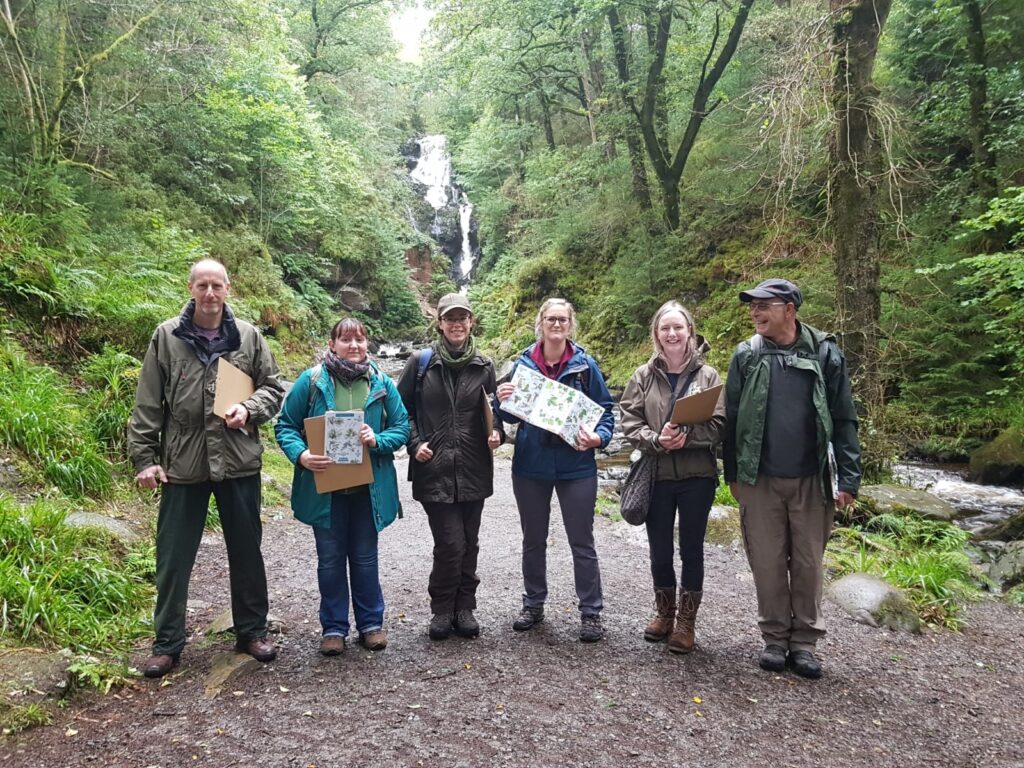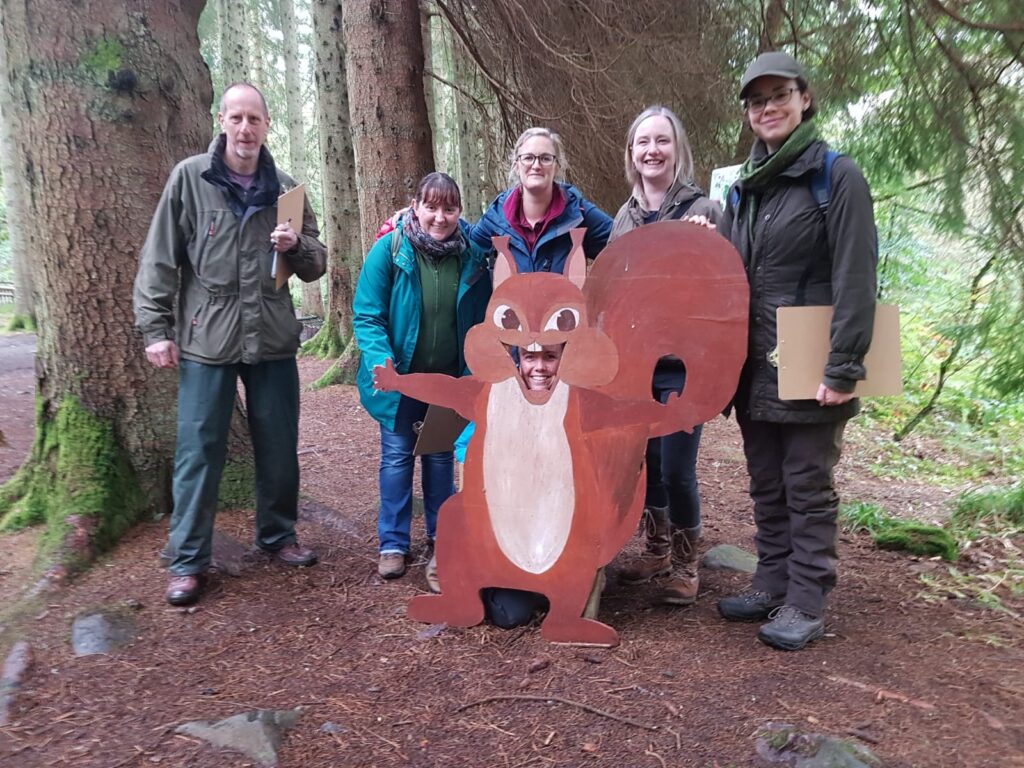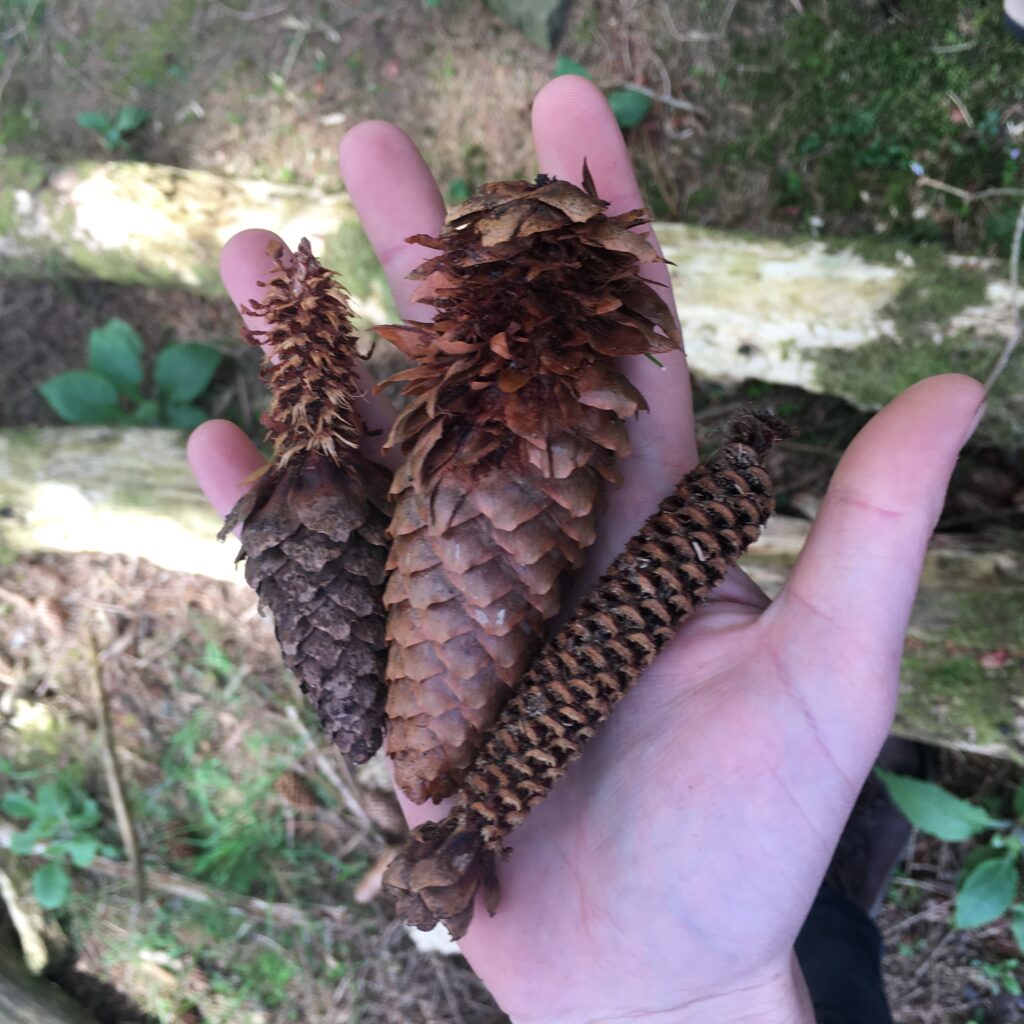The seasons have changed and our walkways are now covered with leaves of orange, yellow, red and brown. Autumn is one of the best times to get playful with tree identification while there is so much to pick up and investigate. What colours and shapes can you see? Are there fruits and nuts on the ground, or still on the tree?
Earlier this year, members of the Saving Scotland’s Red Squirrels team went on a tree ID training day. Here’s a few tips that they wanted to share along with some useful links to see you on any autumn identification adventures.


The basics
Coniferous or deciduous? When submitting a squirrel sighting, we give options to select what type of habitat the squirrel was spotted in. Having a basic knowledge of tree identification comes in helpful here and sharing this allows us to investigate which habitats squirrels appear to be thriving in.
Spotting the difference between a coniferous and deciduous tree in autumn is simple. Deciduous trees with broad leaves, change colour and often lose their leaves at this time of year whereas most cone-bearing coniferous trees that have needles, stay green year-round.
Some of Scotland’s oldest native trees are coniferous, such as Scots Pine. A fun fact about another native coniferous tree, Juniper, is that it has stems that are fragrant throughout – it isn’t just their distinctive, infamous berries that are aromatic!
Finding clues
So what are some of the clues to look for when trying to identify a tree? Each tree species has unique features; you could start with the overall appearance, size and shape of the tree, or look at the finer details for hints. In autumn, you should be able to find plenty of clues on the ground – no need to crack out those binoculars.
Starting with any fallen leaves… what sort of shape is it? Does it have a smooth, lobed or serrated edge? Is it textured at all? You may also find fallen cones, fruits, nuts, twigs or branches on the ground that can inch you closer and closer to making a positive ID. Always remember however, that all of these could have been blown over from elsewhere, so remember to take your surroundings into consideration.
There are some handy mobile apps that you can use to help your detective work in the field, such as the Woodland Trust’s free tree ID app which guides you step-by-step through each feature you may find.
It’s all in a name
A top tip that team squirrel use for remembering different tree species, is by nicknaming the tree or creating a quirky rhyme, for example;
Sitka spruce is remembered as “spiky, scaly Sitka” as the pine needles are spiky if you run your hand over them and the bark has scales on it like a dragon.
Norway Spruce is remembered as “nice Norway” as the pine needles are soft if you run your hand over them. Also, the cones are described as large cigars.
Douglas Fir is remembered as “groovy Dougie” as the bark is really grooved.
And Scots Pine, as the bark is red towards the top, is remembered for its ginger resemblance like all things truly Scottish – including our native red squirrels.
Which tree species create a good habitat for red squirrels?
A great habitat for red squirrels is one with a healthy food supply. A varied mix of cone, fruit, seed and nut-producing tree species ensures that squirrels have plenty of natural resources throughout the year. In autumn, they can often be found ‘caching’ their foraged food in preparation for the winter months, digging food away in a safe space for a later date. Remember to keep an eye out for any buds on trees – this could be a sign that a squirrel (or other animal) has beat you to the fruit first.
Additional useful links
If you just can’t learn enough about Britain’s native and non-native trees, you can find out more information by following the links below. Happy tree ID-ing everyone!
https://forestryandland.gov.scot/learn/trees
https://www.woodlandtrust.org.uk/trees-woods-and-wildlife/british-trees/a-z-of-british-trees/

